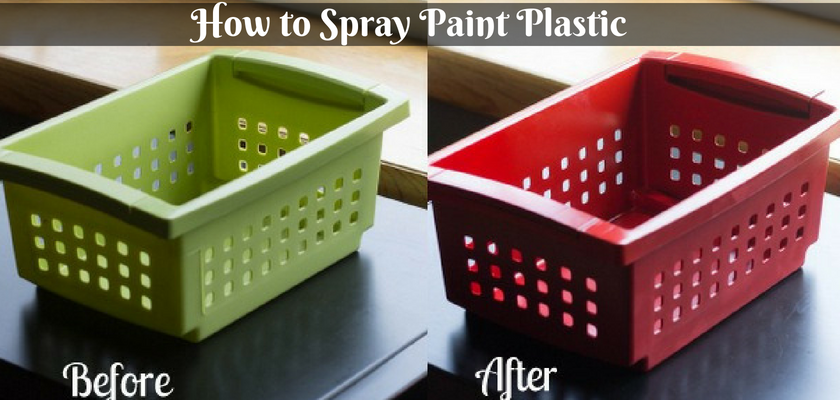How to Spray Paint Plastic

Throughout the whole day, we get in touch with various plastic objects. They can be used from tables to chairs to dishes to parts of cars. Plastic is a reasonable and very handy material that can be formed into any shape you want. Depending on what you're making, it tends to be made to any hardness and thickness. However, one thing you ought to know about that plastic is very hard to paint. Painting on plastic presents a unique issue, as most plastic surfaces are smooth and repel paint adherence. To make the task easier, we have given some tips on how to paint an outdoor plastic table. The procedure is the same for painting any plastic item.

Things You’ll Need:
- Mild soap.
- Rubbing alcohol.
- Cardboard/Newspaper.
- Painter's tape.
- Primer.
- Painter's Touch Acrylic Spray Paint.
Clean plastic surfaces
Appropriate preparation is the way to a smooth and long-lasting finish. Start by completely cleaning the plastic surface you need to organize to paint, utilizing mild soap and water. Having allowed the plastic to dry, wipe it down with rubbing liquor. Next, to stop accidents and limit cleanup, set up a secured work area, fixing it with newspapers, sheets of cardboard, or a canvas. If you found that there are any parts of the plastic you don’t wish to paint, cover them up with painter’s tape.
Apply a coat of primer
You’ll have to apply a coat of primer, ideally one that bonds well. This will help level out the surface of the plastic and give the paint something to stick to. The spray-on kind would be the easiest to utilize, but you can get the brush-on kind too. Let the primer dry completely before continuing. If you are utilizing a spray-able primer, make sure to cover your work surface and work in a well-ventilated area for further procedure.
Spray Evenly from a Distance
You need to try not to spray too close to the piece, as it will unevenly thicken the color on some parts. To make an even tone, spray from a distance. The prescribed distance would be about 4 to 6 inches away from the object you are taking a shot at. This may appear obvious advice, but it's significant that you not only do this when you begin painting, but also follow through with it throughout the whole procedure, even when you regularly stop and start and start another layer.
Shake Painter's Touch Acrylic Spray Paint cans for a couple of minutes. This will ready the paint to spray, blending it and giving you a smoother application.
Don't worry if the first coat of paint doesn't cover the whole surface; you will be applying a few coats of paint. This is vital when you are spraying the paint on.
Let the paint dry
Enable each coat of paint to dry before applying the next one. Alternate the directions you paint in for each layer: side-to-side for the first layer, start to finish for the second layer etc. How many layers you apply relies upon the coverage you require. Much of the time, you'll only need 2 to 3 coats. After that, your project is complete and ready to utilize. If you applied masking tape before, you should remove it now. Now you need to peel it away carefully so that you don't accidentally chip the paint.
Additional Tips
Include a few details, stencils, or weather, whenever desired. This is totally optional, however it can convey more life and character to your piece, especially if it is a prop or figurine.
- Apply stencils to the piece, at that paint over them with spray paint or acrylic paint and a foam brush.
- Use a thin, pointed brush toward paint on sensitive scrollwork or designs.
- Add features with lighter shades of your paint color, and shadows with darker shades.

